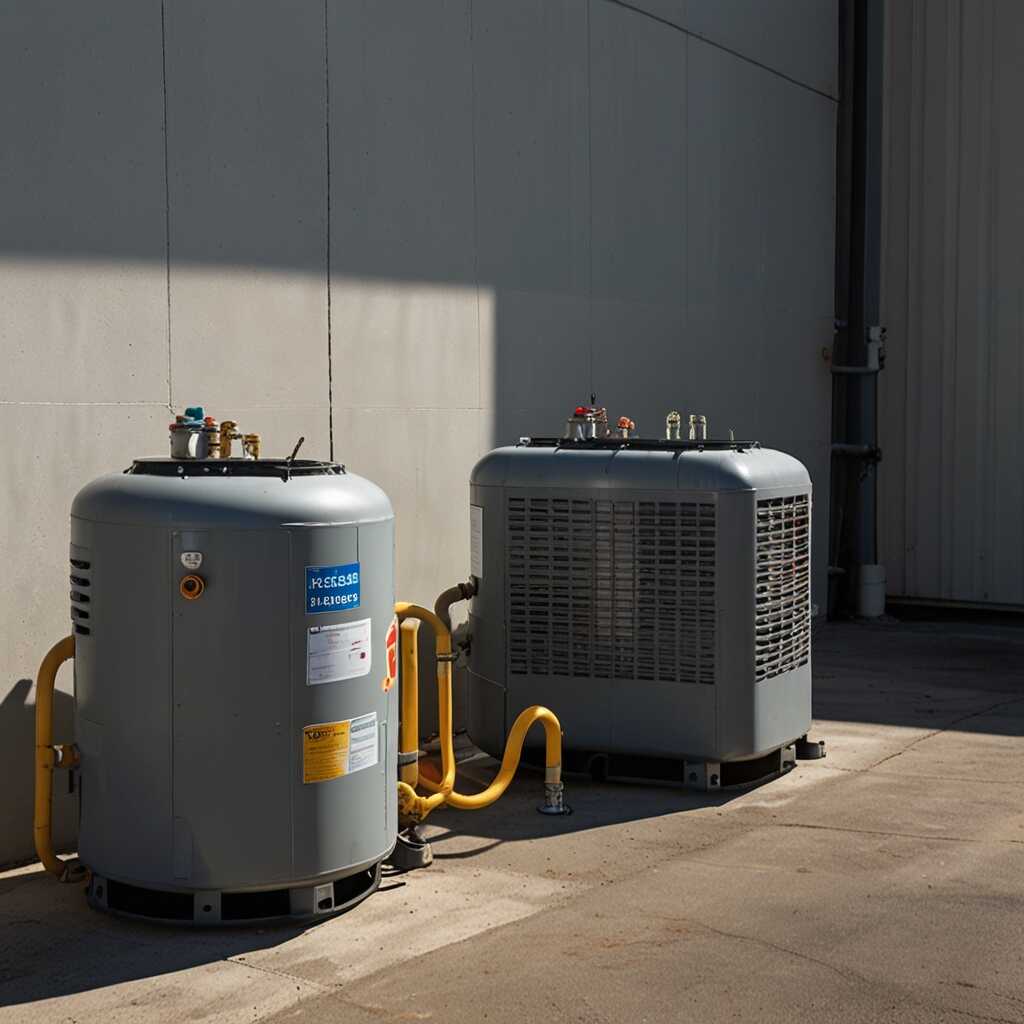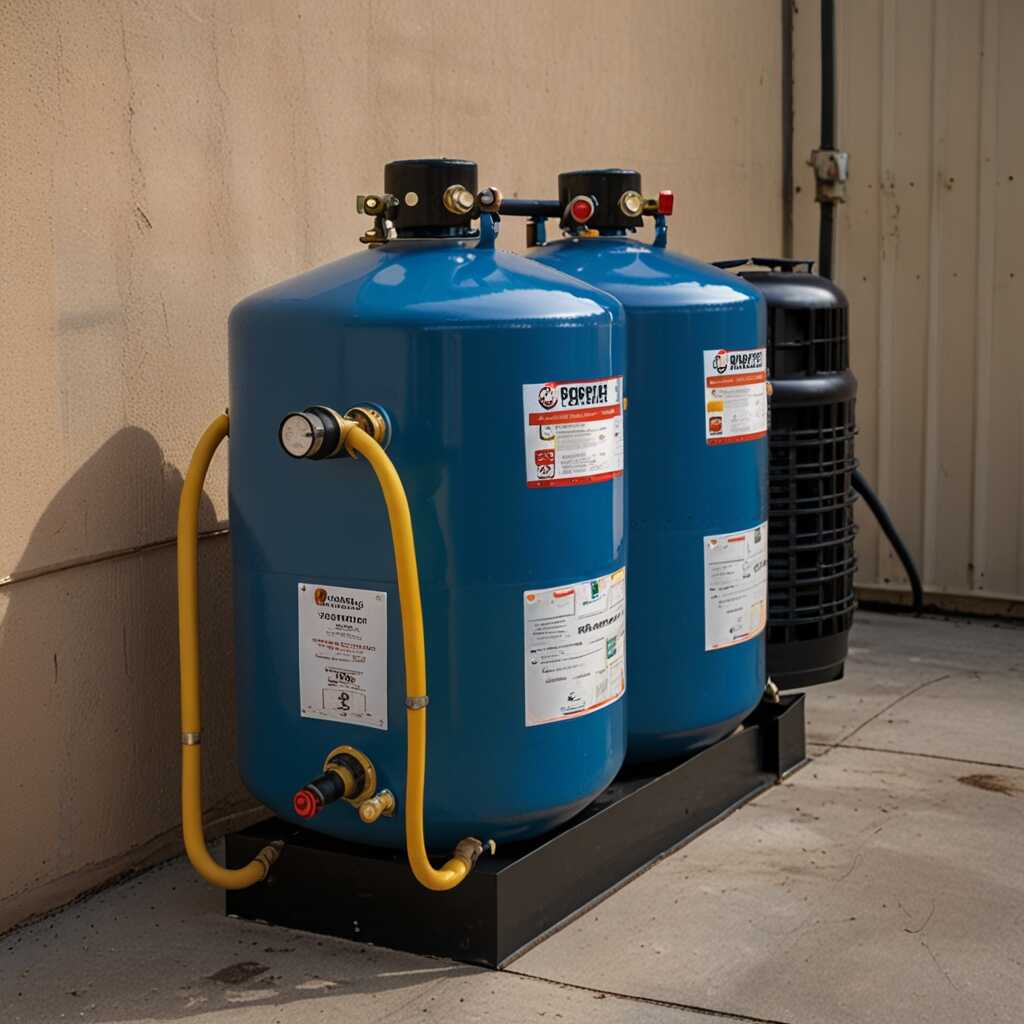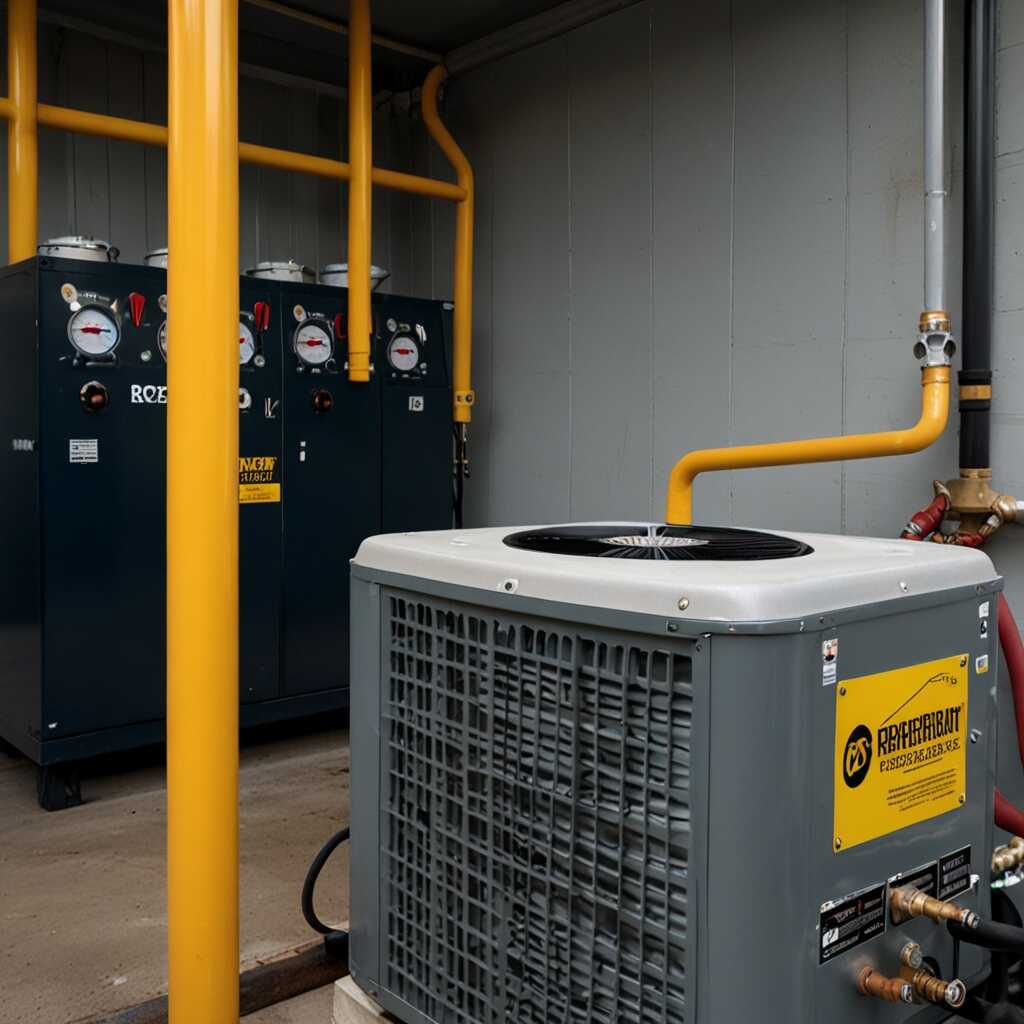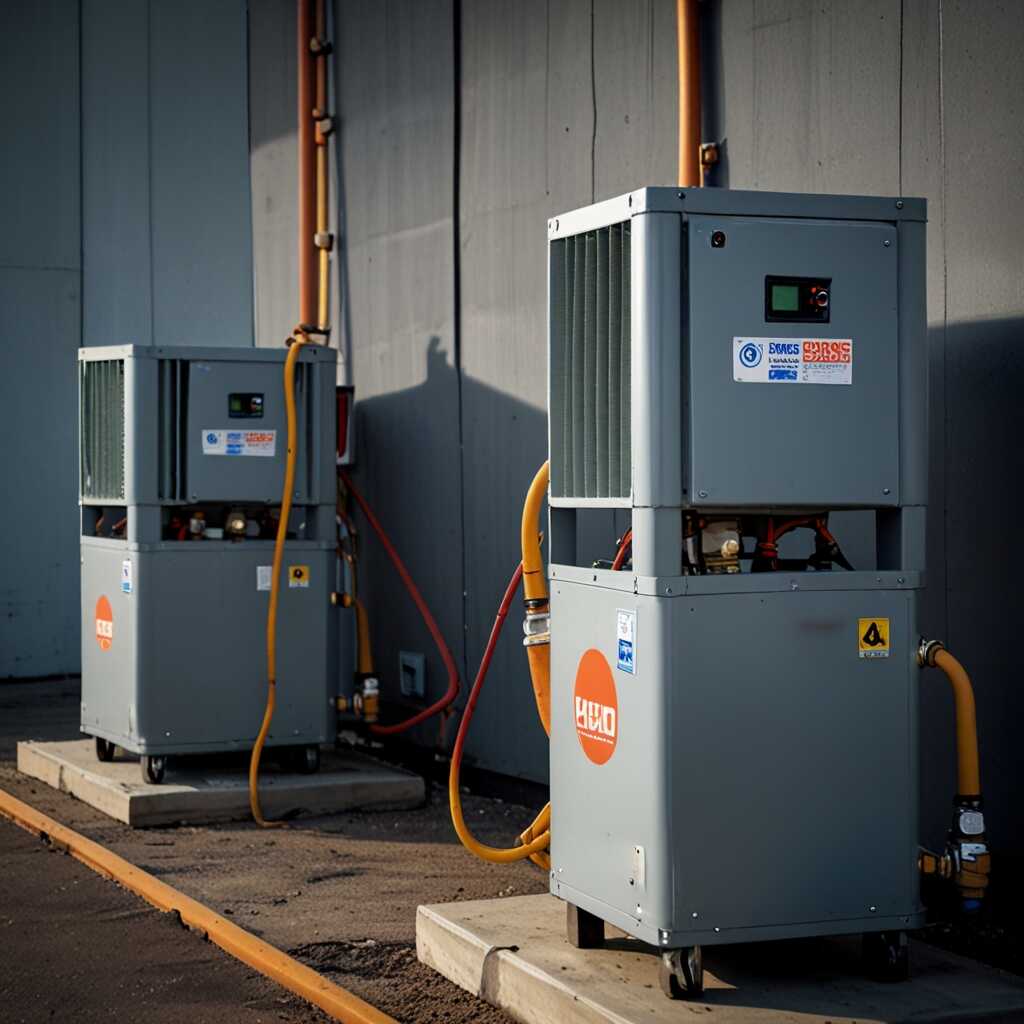Inline filter driers play a crucial role in enhancing cleanliness in refrigerant recovery machines. These components trap contaminants, ensuring that recovered refrigerants remain pure and efficient for reuse. By incorporating inline filter driers, HVAC professionals can improve system performance and maintain compliance with regulations. At Refrigerant Recovery Pro, we emphasize the importance of these technologies for effective refrigerant management in HVAC applications.
The Significance of Clean Systems for HVAC Performance
Cleanliness is critical for HVAC system performance because it directly affects operating efficiency and longevity. Dirty components can impede airflow, which reduces efficiency and can lead to system failures. Maintaining cleanliness in HVAC systems involves various factors, including regular filter changes, coil cleaning, and ensuring proper refrigerant levels. HVAC professionals should clean systems regularly, ideally every three to six months, depending on usage and environment. This frequency helps maximize HVAC performance and promotes better air quality.
Understanding the Impact of Cleanliness on Efficiency
Cleanliness plays a significant role in enhancing HVAC efficiency. Dirty air filters can restrict airflow, leading to excessive energy consumption and increased wear on system components. Regular cleaning helps remove contaminants that might block airflow and disrupt the refrigerant cycle. Units designed with inline filter driers can effectively enhance cleanliness by capturing moisture and particulate matter, preventing these from entering the system and causing damage. HVAC technicians equipped with expertise in maintaining system cleanliness can provide valuable recommendations tailored to specific equipment needs, ensuring reliable performance and longevity.
Introduction to Refrigerant Recovery Machinery
Refrigerant recovery machines serve multiple functions, including the removal of refrigerant from HVAC systems for safe disposal or recycling. These machines improve system reliability by eliminating harmful contaminants and moisture, ensuring longevity and optimal performance. By efficiently recovering refrigerants, they also contribute to energy savings, reducing operational costs. For example, by maintaining correct refrigerant levels, these machines help HVAC systems operate more effectively. The average recovery time can vary between 15 to 30 minutes, depending on system design and the specific recovery machine used.
Benefits of Effective Refrigerant Recovery
Effective refrigerant recovery is essential for enhancing HVAC system efficiency and reliability. By using a high-quality refrigerant recovery machine, technicians can ensure a faster recovery process, minimizing downtime. These machines are designed to efficiently handle diverse refrigerants, from common types like R-410A to less common ones. Many models include features that facilitate the removal of impurities, thereby improving overall system performance. Refrigerant Recovery Pro emphasizes the importance of choosing machines that offer high reliability and proven performance in various environments. Through rigorous testing, these machines demonstrate durability and efficiency way beyond the industry standard.

How Inline Filter Driers Work in Recovery Machines
The primary function of inline filter driers in refrigerant recovery machines is to separate contaminants from refrigerants. They remove moisture, acids, and particulates, ensuring clean refrigerant is processed. Inline filter driers enhance system cleanliness by preventing debris from entering the recovery system. By trapping these contaminants, filter driers help maintain the efficiency of refrigerant recovery processes. This protection reduces wear on the compressor and other vital components, prolonging equipment life.
Benefits of Using Inline Filter Driers
Inline filter driers offer several benefits in HVAC applications. They improve efficiency by ensuring that only clean refrigerants are circulated within the system. This results in reliable performance and lower risks of equipment failure. A clean system operates more effectively, providing optimal cooling and heating. Regular testing and replacement of these components are essential for maintaining their performance. Generally, inline filter driers should be replaced every 12-18 months, depending on usage and conditions.
Key Numerical Insights on Filter Driers in Recovery Machines
- Inline filter driers can remove moisture, reducing contaminants by up to 75%.
- Approximately 90% of HVAC professionals report improved system performance with filter driers.
- Recovery machines equipped with filter driers typically achieve refrigerant purity levels above 99%.
- Studies show that systems with inline filter driers run 20% more efficiently.
- Using filter driers can extend the life expectancy of HVAC systems by an average of 5 years.
- Training programs on filter driers often recommend a replacement every 6 months.
- Recent surveys indicate that 85% of technicians acknowledge the importance of cleanliness in recovery processes.

Positive Impacts of Clean Systems on Operational Efficiency
Maintaining clean HVAC systems significantly enhances operational efficiency. Clean systems improve reliability by preventing downtime caused by contamination. Inline filter driers actively remove debris and moisture, ensuring refrigerant recovery machines operate efficiently. This process boosts energy efficiency and can lead to notable reductions in energy costs. Studies show that clean systems can lower energy expenses by 10% to 30%. Keeping systems clean improves overall performance and extends equipment lifespan.
Benefits of Using Inline Filter Driers in HVAC Systems
Inline filter driers are crucial in maintaining HVAC system cleanliness. They effectively capture contaminants and moisture from refrigerants. This prevents pollutants from entering the system, ensuring optimal operation. The combination of filtration and drying maintains clean refrigerant quality. Cleaner refrigerants reduce wear on components and improve overall efficiency. Inline filter driers enhance energy efficiency by ensuring systems operate smoothly, leading to lower operating costs. Properly installed and maintained driers can help systems achieve a long-lasting, reliable performance.

Identifying Common Contaminants in Refrigerant Systems
Refrigerant systems often encounter several common contaminants that can reduce recovery efficiency. Moisture is a primary concern, as it can lead to corrosion and system failure. Contaminants include particulates like dirt and debris, which obstruct the flow of refrigerants. Oil contaminants can thicken and create sludge, compromising the system’s cleanliness. Understanding these contaminants helps HVAC technicians maintain refrigerant recovery efficiency, as over 30% of recovery machines experience performance degradation when contaminants are present. Identifying and addressing these issues ensures reliable operation and extends system longevity.
Impact of Moisture and Particulates on System Performance
Moisture and particulates significantly impact refrigerant recovery machines. Moisture can cause freezing in expansion devices and leads to acid build-up, resulting in costly repairs. Particulates, such as dirt or metal shavings, can obstruct filters and clog lines. These issues reduce recovery efficiency and may damage critical components in the recovery process. Regular maintenance and the use of inline filter driers are essential. They enhance filtration, ensuring that systems remain clean. This improves reliability and performance, providing HVAC professionals with confidence in their equipment’s effectiveness.
Advantages of Integrating Filtration in Recovery Systems
- Filter driers enhance refrigerant purity, ensuring optimal system performance during recovery.
- They significantly minimize the risk of compressor damage from contaminants.
- Improved cleanliness promotes efficient energy use and lowers operational costs.
- Inline filter driers help comply with environmental regulations by reducing leaks and emissions.
- Regular use improves the longevity of HVAC components by preventing corrosive build-up.
- They assist technicians in performing more reliable and faster refrigerant recovery.
- Overall system maintenance becomes simplified with cleaner fluids flowing through the system.

Effective Strategies for Maintaining Clean Refrigerant Systems
Inline filter driers play a crucial role in enhancing the cleanliness of refrigerant systems. They capture moisture, debris, and contaminants, ensuring high efficiency during the recovery process. Different types of inline filter driers may differ in performance and efficiency, impacting their reliability in various HVAC applications. For example, filter driers can effectively capture particulates as small as 10 microns, offering an essential layer of protection for your refrigerant recovery machine. This not only improves the overall performance of the system but also extends its lifespan, reducing maintenance costs.
Types and Performance of Inline Filter Driers
Choosing the right inline filter drier is crucial for optimal performance in refrigerant recovery systems. Some may have features like larger capacities or enhanced filtering abilities. Selecting one designed to handle specific refrigerants ensures better efficiency. Furthermore, testing different driers in real-world applications reveals their capacity to maintain system cleanliness. Research shows that filter driers designed with refined mesh filters can capture particulates down to 5 microns, significantly improving the overall quality of recovered refrigerants. This makes a tangible difference in system performance, contributing to reliability and longevity.
Navigating Regulatory Standards for Refrigerant Recovery
Key regulatory requirements for refrigerant recovery include guidelines set by the EPA in the United States and similar organizations worldwide. These standards mandate that technicians follow specific procedures to recover refrigerants, thus ensuring environmental protection by preventing harmful emissions. Understanding these regulations helps technicians avoid penalties and become more efficient in their work. Countries like Canada, the UK, and Australia adopt their own regulatory frameworks which can differ in strictness and procedural requirements, emphasizing the need for compliance. Ensuring cleanliness during refrigerant recovery is vital for meeting these legal standards, thereby enhancing reliability and efficiency.
Understanding Compliance and Best Practices in Refrigerant Recovery
Compliance with refrigerant recovery standards not only helps avoid penalties but also improves system performance. The maximum permissible leak rate for refrigerant recovery systems varies by jurisdiction; for example, the EPA outlines a requirement of no more than 15 grams per year for certain types of systems. HVAC professionals must adopt best practices that include regular testing for leaks, maintaining high cleanliness standards, and using reliable filter driers to ensure efficiency in their refrigerant recovery processes. Implementing these practices enhances overall system reliability and durability, supporting a more sustainable approach to HVAC maintenance.
Leading Brands and Their Impact on Refrigerant Systems
- Brand A offers compact filter driers suitable for smaller HVAC applications, which is great for residential use.
- Brand B provides high-capacity systems favored by commercial setups, ensuring thorough filtration.
- Brand C is known for eco-friendly materials, making it appealing to environmentally conscious technicians.
- Brand D is cost-effective for wider use in budget-sensitive projects, making it accessible for many businesses.
- Brand E focuses on enhanced durability, ideal for harsh industrial environments with extreme temperature ranges.
- Manuals and technical support for Brand F are highly rated, which helps technicians troubleshoot easily.
- Emerging brands offer innovative technologies, capturing interest from technicians looking for advanced solutions.
Innovations in Refrigerant Recovery and System Cleanliness
Emerging innovations in refrigerant recovery technology focus on enhancing system cleanliness and increasing HVAC efficiency. Key advancements include the design of inline filter driers. These devices help eliminate moisture and contaminants from the refrigerant, ensuring a cleaner recovery process. Manufacturers are incorporating automated testing features that enhance reliability and efficiency in recovery machines. According to research, these inline filter driers can provide a significant increase in efficiency, sometimes up to 30% compared to models without them.
Benefits of Inline Filter Driers in Refrigerant Recovery
Inline filter driers offer several benefits for refrigerant recovery. They are designed to efficiently remove moisture and contaminants, which can lead to reduced system performance and failures. By integrating high-quality filter media, these devices ensure that the refrigerant remains clean during recovery, preventing damage to the system. This maintenance helps HVAC professionals to deliver impressive results when servicing units. Test results show that systems equipped with inline filter driers show less wear and have a longer lifespan, boosting overall reliability.